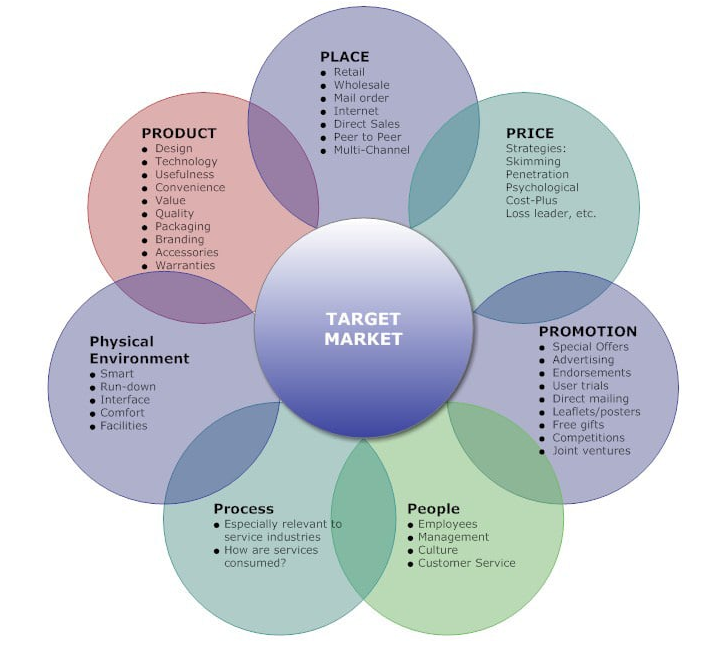From 4Ps to 7Ps: Towards an Integrated Marketing Mix
As technology advances, market dynamics have changed. How to update and integrate the Marketing Mix theory?
Published by Lukasz Sramkowski. .
Planning Bestpractice Internationalisation International marketing International marketing
The field of marketing is in continuous evolution and the concept of marketing mix has not been spared: fundamental changes and improvements have in fact taken place in Marketing mix theory over the years.
In the previous article "Supporting the Internationalization of SMEs: Marketing Mix", we presented the 4Ps of marketing mix as the main pillars of the marketing mix theory.
The 4 Ps have been associated with the Marketing Mix since their creation by E. Jerome McCarthy in 1960 and they are centered around the concepts of Place, Price, Product and Promotion.
In the late 70’s, it was widely acknowledged by Marketers that Marketing Mix should be updated. This led to the creation of the Extended Marketing Mix in 1981 by Booms & Bitner, which added 3 new elements to the 4 Ps Principles. This allowed the extended Marketing Mix to include products that are services and not just material goods. So, the 7Ps model emerged ad a marketing model that modifies the 4Ps model with some additional pillars. In this article we want to point out how the 7Ps model differentiate itself from the former 4Ps.

Source: marketingmix.co.uk
Characteristics of 4Ps and 7Ps
As mentioned above, the 4Ps include Place, Price, Product and Promotion. The 7Ps model, on the other hand, is a combination of the 4Ps with 3 additional segments, which refer to People, Process and Physical evidence.
- People are presenting how our business works inside. Any employee who comes in contact with a company's customer will make an impression, and that can have a profound effect on customer satisfaction. In fact, many customers cannot separate the product or service from the staff members who provide it. So, it is very important to evaluate the level of after sales support and advice provided by the people involved.
- The Process is intended as an evaluation of the efficiency of the process that allows the effective delivery of the product/service to the final customer. For this pillar, there are several themes to investigate:
Is your sales process efficient?
Do you have a good process for dealing with technology issues?
Are your processes customer focused?
Process is one of the Ps that is frequently overlooked, but it often represents the first experience of a company that many customers have. - Last but not least Physical evidence, which provides the customer with reassurance about the product provided. This often involves making available evidence, testimonials and reviews from third parties who have already interacted positively with the company.
What is so different about them?
The difference between 4Ps and 7Ps lies in the purpose we want to achieve. The extended marketing mix helps businesses with a deeper understanding of how to meet the needs and expectations of customers. Although it is sometimes viewed as dated, the 4Ps model is an essential tool, which results particularly useful for small businesses that sell a “standard” product. In this case, the traditional definition of marketing mix is more coherent with the concepts and objectives of the internationalization process.
It would certainly be possible to use the 7Ps model, taking into account the possibility that the efforts made to implement this strategy would not be profitable.
On the other hand, when our business is specialized in providing a service or a highly differentiated product, then we should choose the 7Ps model. In this case, the customer experience and the degree of after sales support shape customer satisfaction.
It is also important to highlight that the 7Ps helps companies to review and define key issues that affect the online marketing mix for all types of businesses. Digital transformation and the rise of e-commerce has introduced new aspects related to the ways customers find and purchase products. The consumer is no longer passive in their choices, but more selective and demanding. In this sense the 7Ps model gives the right framework, moving from a company-centric to a consumer-centric perspective thanks to the three additional variables.
Conclusions
As technology advances, market dynamics have changed. Although the 4Ps, the cornerstones of marketing mix, still remain valid in the business process, business and digital transformation has introduced new aspects related to the ways customers choose.


